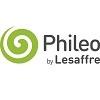Explore all the information on
Aquaculture industry
Welcome to the page about Aquaculture industry of Engormix; a source of knowledge on Aquaculture industry.
Comments related to #Aquaculture industry
Featured users in Aquaculture industry

Dr. Thierry Chopin
Algae Technology Platform Americas 2013
Canadian Integrated Multi- Trophic Aquaculture Network
Canada
Canada

Alireza Asem
Canada

Lukas Manomaitis
Director
Thailand
Thailand
Top 10 content about #Aquaculture industry
















